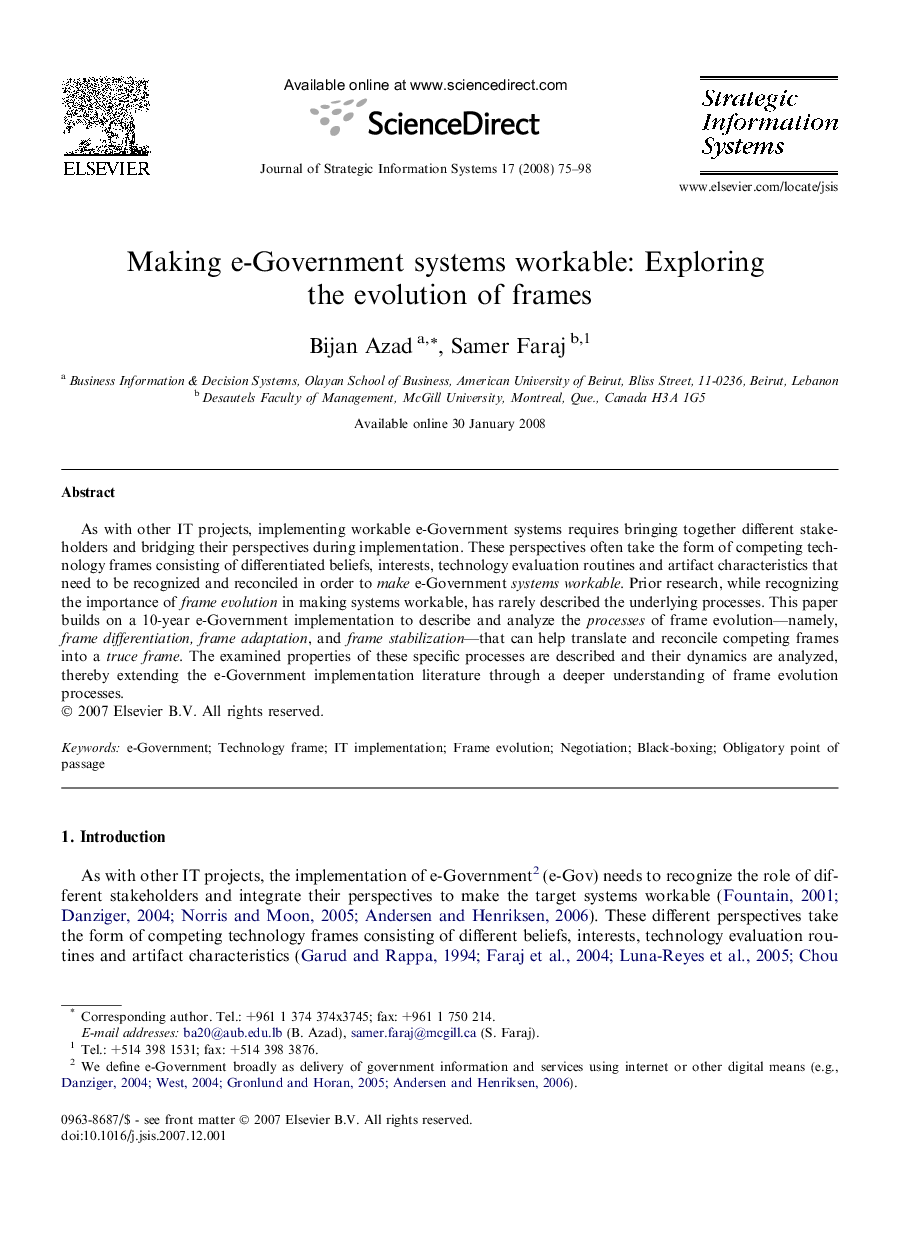| Article ID | Journal | Published Year | Pages | File Type |
|---|---|---|---|---|
| 557946 | The Journal of Strategic Information Systems | 2008 | 24 Pages |
As with other IT projects, implementing workable e-Government systems requires bringing together different stakeholders and bridging their perspectives during implementation. These perspectives often take the form of competing technology frames consisting of differentiated beliefs, interests, technology evaluation routines and artifact characteristics that need to be recognized and reconciled in order to make e-Government systems workable. Prior research, while recognizing the importance of frame evolution in making systems workable, has rarely described the underlying processes. This paper builds on a 10-year e-Government implementation to describe and analyze the processes of frame evolution—namely, frame differentiation, frame adaptation, and frame stabilization—that can help translate and reconcile competing frames into a truce frame. The examined properties of these specific processes are described and their dynamics are analyzed, thereby extending the e-Government implementation literature through a deeper understanding of frame evolution processes.
